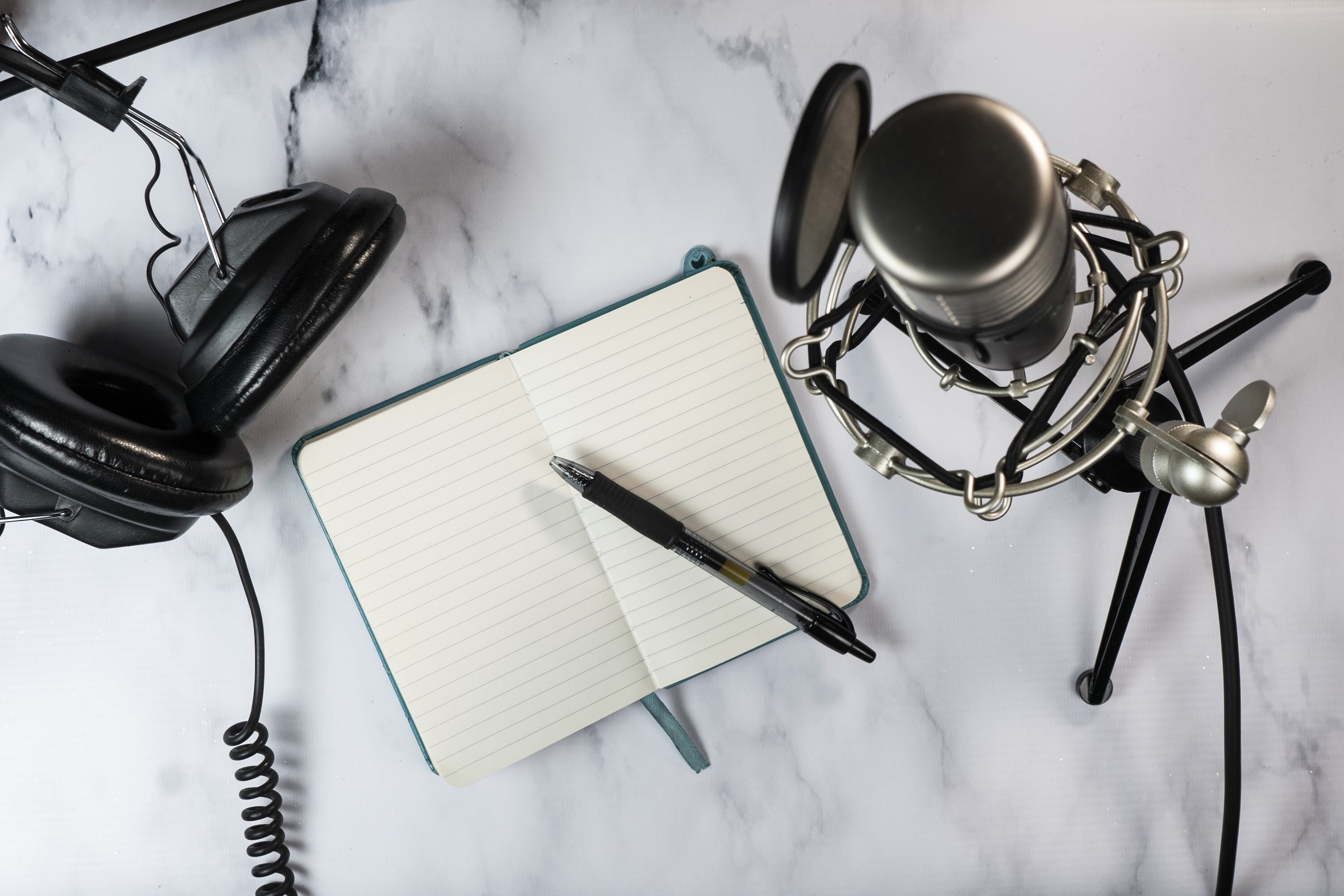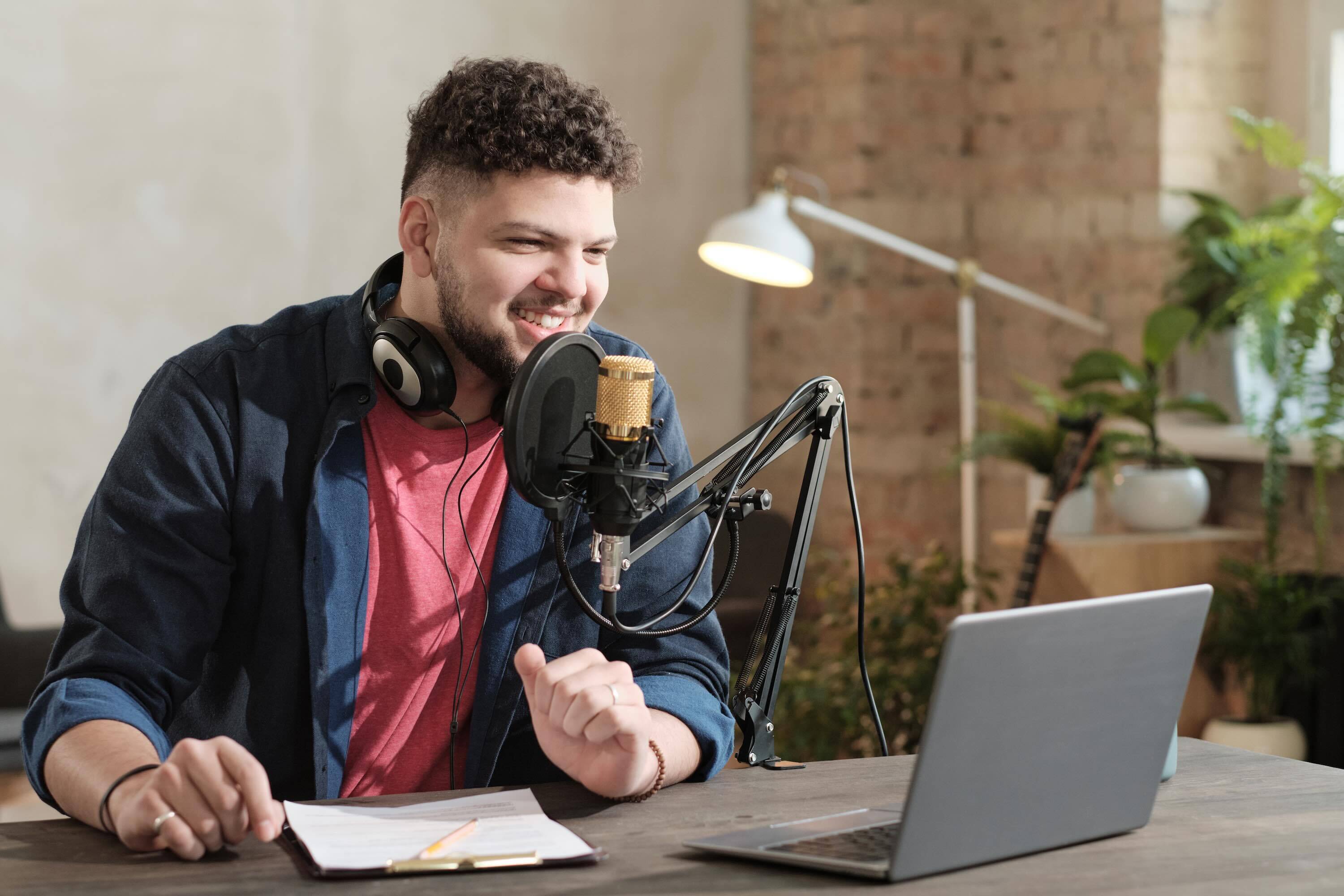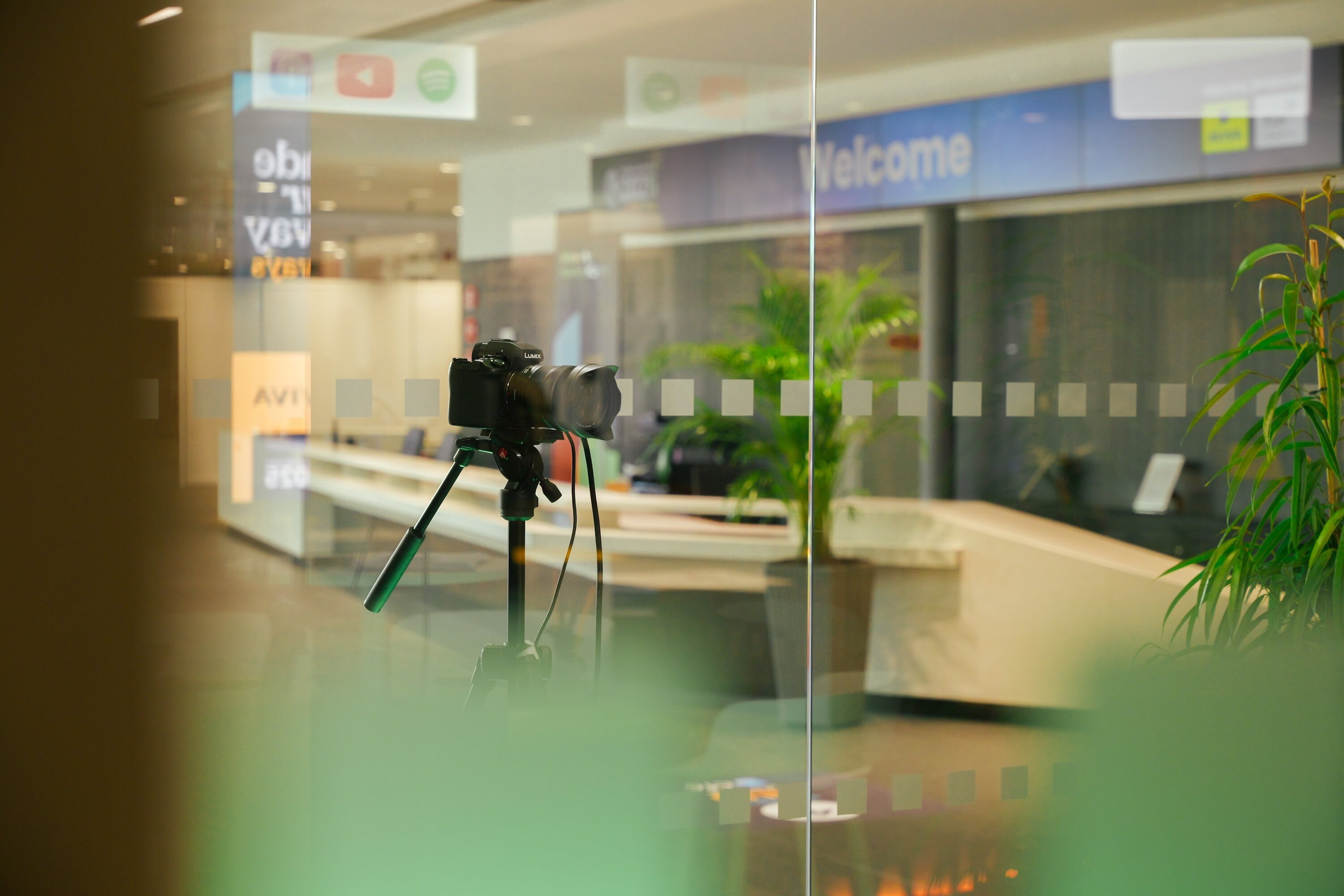Everyone wants to know how to make money from a podcast. But the shows that actually do aren’t chasing a magic formula. They’re not waiting to “get big enough” before monetising. They’re building layered revenue strategies from the ground up and turning loyal listeners into paying supporters.
And the timing has never been better. A recent eMarketer study found that nearly 70 percent of advertisers plan to increase their podcast budgets, the highest in more than a decade.
Podcast monetisation today isn’t about one big ad deal. It’s about combining podcast revenue models into a system that generates consistent earnings and scales over time. This guide shows you how to do precisely that.
Why monetisation matters for podcasters in 2025
For many creators, podcasting starts as a passion project. But when that show builds an audience and influence, monetisation becomes more than a nice-to-have — it’s what allows the work to grow. A strong revenue strategy turns a creative project into a sustainable venture. It gives you the freedom to invest in better storytelling, expand your team, or experiment with new formats without burning out or compromising quality.
Monetisation also strengthens your relationship with your audience. When listeners choose to support your show, whether by joining a membership, buying a product, or attending a live event, they become part of its future. That sense of shared ownership builds loyalty and deepens engagement, which in turn makes every revenue stream more successful.
And perhaps most importantly, revenue gives you independence. Instead of relying on a single sponsor, algorithm, or platform, you’re building a business with multiple income streams and long-term stability. That stability is what keeps great shows going, even as the industry evolves.
But how can you monetize? If you’re asking that question, you’re in the right place. Let’s start with the most obvious way: podcast sponsorship opportunities and advertising.

Sponsorships and advertising: how to make them work harder
Sponsorships are one of the most reliable podcast revenue models. To make them truly effective, you need to understand the formats available, how to price them, and how to turn one-off ads into long-term partnerships.
Host-read ads: still the gold standard
A host-read ad is exactly what it sounds like: a sponsorship message read by you, the host, during an episode. Instead of a generic pre-recorded spot, it’s delivered in your voice and style, and that authenticity is what makes it so effective.
Because listeners already trust you, they’re more likely to pay attention and act. In fact, research from Nielsen found that host-read ads drive up to 71 percent higher brand recall than non-host-read ads, making them one of the most powerful revenue tools in podcasting.
Most host-read ads are priced on a CPM (cost per mille) model, which means you’re paid a set amount per 1,000 downloads. Industry averages range from $18 to $25 for a 30-second ad, although highly engaged niche shows can charge significantly more.
To attract sponsors, focus on your audience rather than just your download numbers. Brands want to know who’s listening, why they care, and how your show aligns with their product. A clear media kit that highlights audience demographics, engagement rates, and past campaign results will help you stand out.
Finally, don’t stop at the audio. Bundling ad reads with mentions in your newsletter, shoutouts on social media, or links in show notes can increase your value and justify a higher price. And when possible, aim for long-term deals instead of one-off campaigns — consistency not only deepens listener trust but also turns sponsorship into predictable revenue.
Delivery methods: baked-in vs dynamically inserted
There are two main ways to deliver host-read ads, and each has its own strengths.
Baked-in ads are recorded directly into the episode audio. They sound seamless, feel organic, and stay in place forever, which is perfect for building trust and authenticity. They also provide sponsors with ongoing exposure as listeners continue to discover older episodes. The downside is that once the episode is published, you can’t replace the ad or update the messaging without editing and re-uploading the audio.
Dynamically inserted host-read ads use the same insertion technology as programmatic campaigns, but with your own recorded reads. This gives you more flexibility. You can change sponsors, update copy, or even adjust pricing as your audience grows. However, they can feel slightly less integrated if not recorded carefully, and because they’re swapped out over time, they don’t offer the same long-tail value baked-in ads do.
Many podcasters use a mix of both: baked-in ads for premium sponsors who want evergreen exposure, and dynamic host-read ads for ongoing campaigns that evolve with the show. Because baked-in ads stay in your archive forever, you should charge more for them, while dynamic ads are often priced lower since they can be swapped, updated, or removed over time.
Programmatic ads: set-and-forget income
With programmatic advertising, you connect your show to an automated ad marketplace where advertisers bid on available inventory in real time. When a listener streams or downloads an episode, the platform automatically inserts the winning ad, creating a revenue stream that operates in the background with minimal ongoing effort.
Because the process is automated and advertisers have less control over targeting, CPMs are usually lower than for host-read ads. But if you have consistent traffic or a large back catalogue, those smaller payments can add up quickly. And because every impression counts, programmatic is especially effective for shows that release frequently or have evergreen content that continues to attract listeners over time.
Most platforms also offer basic controls, such as excluding categories like politics, gambling, or religion, to ensure brand alignment. This gives you some oversight while still benefiting from the efficiency and scale of automation.
How it works: the technology behind the ads
Programmatic ads rely on dynamic ad insertion, which is a feature offered by many podcast hosting platforms and dedicated ad networks. You mark pre-roll, mid-roll, or post-roll positions in your episodes, and the platform fills them with real-time ad placements.
Many podcasters pair this model with host-read sponsorships: one brings higher revenue per placement, while the other provides automated, passive income across your entire catalogue. It’s a low-effort way to keep episodes earning long after they’re published.

Affiliate marketing: scaling income without selling out
Affiliate marketing is a performance-based model where you earn a commission every time a listener makes a purchase or signs up for a service through your unique link or promo code. It’s one of the easiest ways to monetise a show because you don’t need massive download numbers or direct sponsorship deals to start generating income.
It works because it’s rooted in trust. Listeners already see you as an authority on your topic, so when you recommend something relevant and useful, they’re more likely to act on it. That credibility means affiliate campaigns often outperform traditional ads, especially in niche spaces.
To do it well, focus on products you genuinely use or that solve real problems for your audience. Negotiate higher commissions directly with brands instead of relying solely on affiliate networks, and prioritize recurring revenue opportunities, such as subscriptions or memberships. Track conversions with unique codes or links, test where and how you mention them in episodes, and integrate recommendations naturally into your content rather than reading them like ads.
Listener support and crowdfunding: turning fans into backers
Instead of relying on advertisers, you invite your audience to contribute financially — either through ongoing memberships on platforms like Patreon or one-time donations via tools like Buy Me a Coffee or Ko-fi. Some podcasters also use crowdfunding sites such as Kickstarter to fund new seasons, special series, or major production upgrades.
It works because podcast audiences are often highly loyal. If your show consistently delivers value, many listeners are happy to support it simply because they want it to continue.
To do it strategically, make giving easy and rewarding. Offer tiered membership levels with perks like bonus episodes, early access, or exclusive Q&As. Set clear funding goals when running campaigns and update supporters regularly so they feel part of the journey. Even if contributions start small, a dedicated base of backers can grow into a reliable, recurring revenue stream.
Merchandise and digital products: expanding beyond the mic
Physical products, like T-shirts, mugs, tote bags, or stickers, give listeners something tangible to connect with. Digital products, such as e-books, online courses, templates, or audio guides, scale even faster because they are relatively inexpensive to produce once created.
This approach works because it taps into community identity. Fans want to show their support and feel part of something bigger, and products tied to your show’s tone, catchphrases, or values let them do that. For digital products, the appeal is depth: they help listeners go beyond the show and solve specific problems or learn more about the topics you cover.
A strong example is The Minimalists podcast, which has built a business around its message by selling books, online courses, and documentary-style films that extend their content far beyond the audio format.
To make this work strategically, align what you sell with your audience’s interests. Limited-edition merchandise drops or themed collections can build excitement and urgency, while digital products tied to popular episodes convert better. Promote them across multiple channels, like your website, newsletter, and social media, to capture attention beyond the podcast itself.

Premium content and subscriptions: building recurring revenue
Premium content turns your most loyal listeners into paying members by offering something they can’t get in your regular feed. That could mean ad-free episodes, bonus interviews, early access, behind-the-scenes content, or even private community spaces. Subscriptions can be hosted on platforms like Apple Podcasts, Patreon, or Supercast, or built directly into your own website for more control.
It works because it deepens the relationship between you and your audience. People subscribe not just for extra content but for a sense of access and belonging.
Examples of premium offers that convert
The most successful membership models prioritize exclusivity and depth over quantity. Bonus episodes with extended interviews or behind-the-scenes insights are simple to produce and consistently rank among the most popular perks. Private Q&A sessions or live virtual events create direct interaction and make listeners feel part of an inner circle. Some creators go further with members-only communities, early access to tickets or merch, or discounts on digital products.
The key is to offer something that feels different from your free content — not just more of the same. If listeners feel like they’re getting insider access or extra value, they’re more likely to subscribe and stay subscribed.

Live events and workshops: monetising your audience IRL and online
Live events are one of the most powerful ways to turn listeners into a real community. They can be anything from a casual meetup or live recording to a paid workshop, panel discussion, or even a full conference. And they don’t have to happen in person — virtual events like webinars or online classes are often easier to organise and can reach a wider audience.
The reason they work is simple: people want connection. Listeners who already trust you are often willing to pay for the chance to meet you, learn from you, or connect with others who share their interests. In addition to ticket sales, events generate extra revenue through sponsorships, merchandise sales, and VIP experiences.
A great example is The LadyGang podcast, whose hosts created LadyWorld, a three-day event combining live shows, wellness sessions, concerts, and fan experiences. It shows how a podcast brand can grow beyond audio and become a full-scale event with multiple revenue streams.
If you’re trying this for the first time, start small — a live Q&A or a one-hour workshop is enough to test the waters. Make sure the topic ties closely to your show and audience, and collect attendee emails so you can keep building those relationships.
Combining revenue streams: the new monetisation mindset
But the most important point? The most successful podcasters do not rely on a single income source. They layer multiple podcast revenue models together to build a business that is stable, scalable, and sustainable. Sponsorships can bring in predictable revenue, affiliate marketing adds passive income, premium subscriptions create recurring cash flow, and products or events deepen community engagement. Each one plays a different role, and together they form the foundation of how to make money from a podcast in a way that lasts.
The key is to think like a media company rather than a creator. Start by testing one or two revenue models, track what works, and add more over time. Even small income streams can become significant when they are combined and optimised. As your show grows, those layers of revenue give you more freedom to reinvest in production, experiment with new ideas, or focus on creating the best possible content.
Monetisation is not about chasing every opportunity. It is about building a strategy that fits your audience, aligns with your values, and supports the future of your show. When you combine multiple podcast revenue models and approach monetisation strategically, revenue becomes more than income. It becomes the fuel for everything you want to create next.









